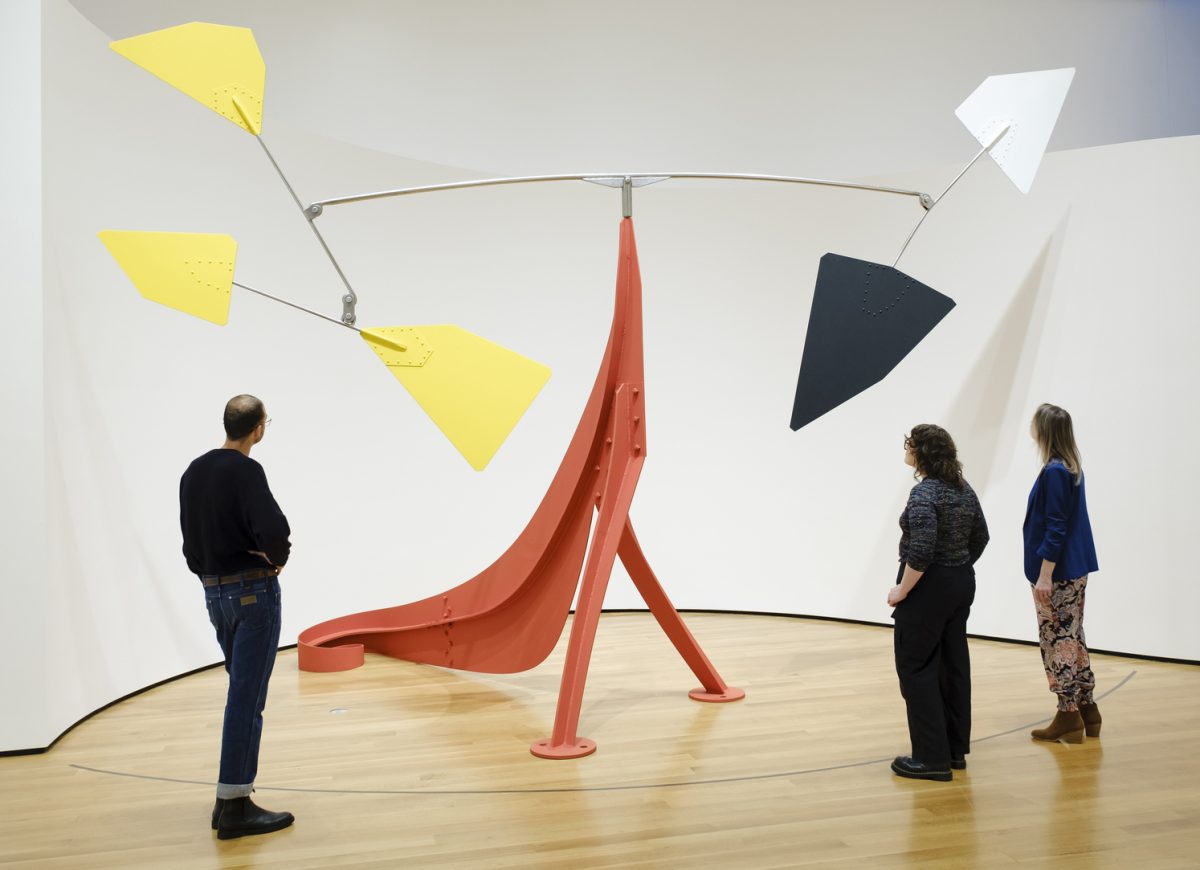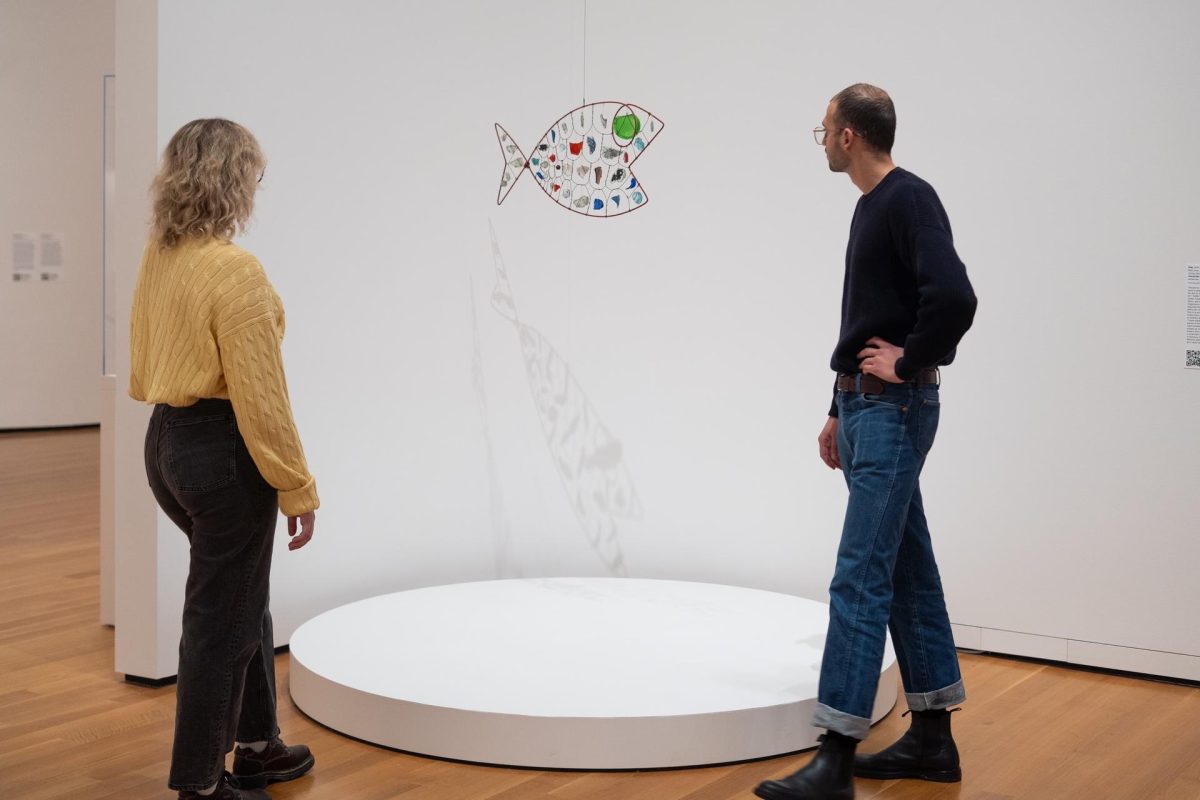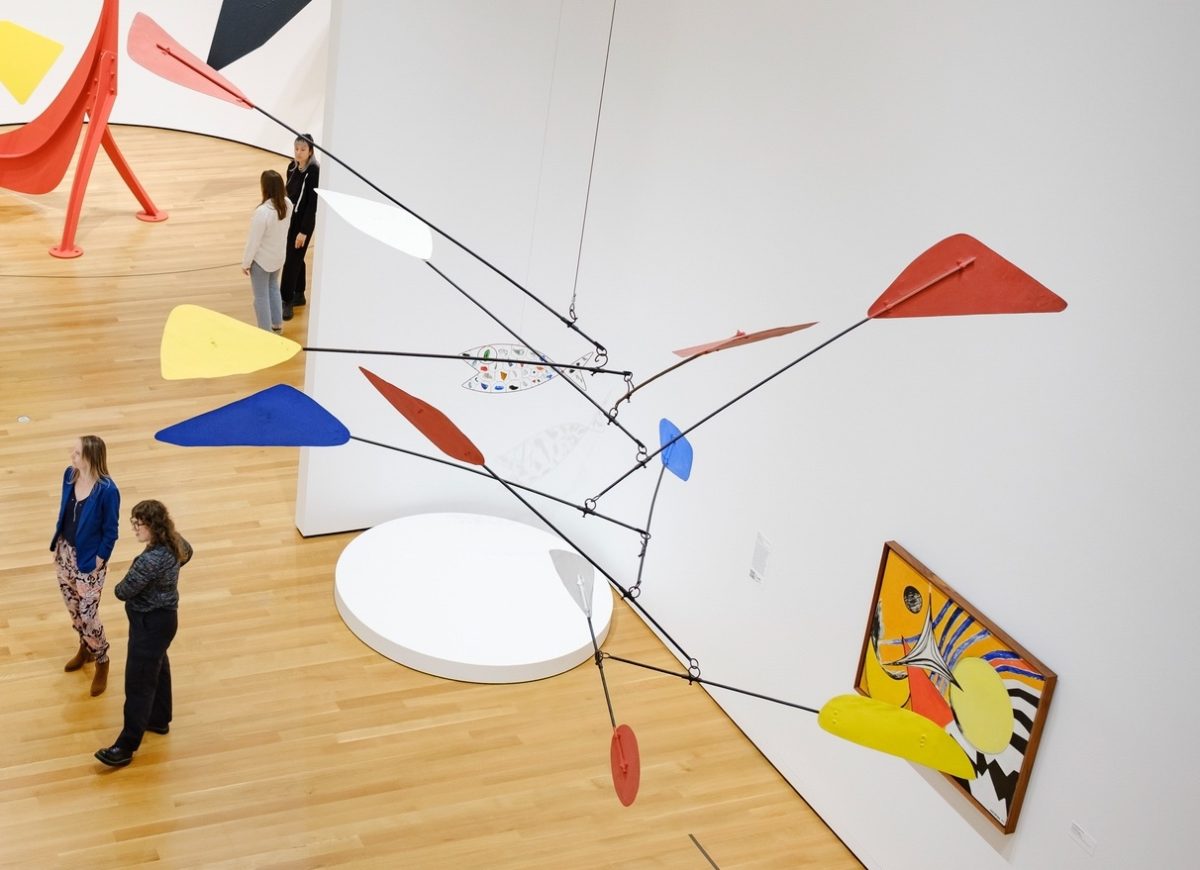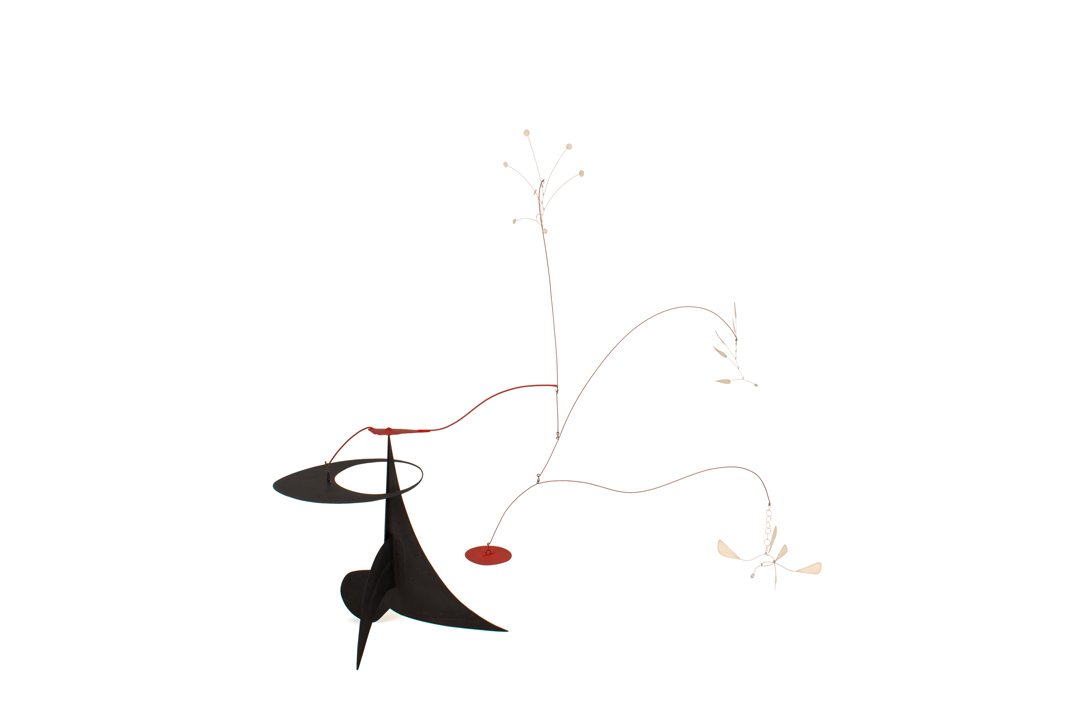Calder Smartphone Tour: Red Curly Tail
In 1933, Alexander Calder and his wife, Louisa, relocated to the United States from Paris, France, and purchased a farmhouse in Roxbury, Connecticut. The property was large enough to allow the artist to work on an elevated scale and an old icehouse was transformed into his new studio.
The following summer, Calder completed his first collection of outdoor works, which ranged in height from five to nine feet. Working larger proved to be expensive and experimental for the artist, so he began making models—or maquettes—in 1936 from which he could enlarge his final sculpture.
The last two decades of Calder’s life were very successful, and he received multiple high-profile commissions for outdoor sculptures. Red Curly Tail, previously displayed on the lawn of the Shirley family home is a standing mobile that evokes a sense of wonder. Other significant works Calder created during this period include El Sol Rojo for the 1968 Olympic Games in Mexico City and The Eagle (1971), now on view at the Olympic Sculpture Park on Seattle’s waterfront.
Tune in to the fifth stop on the free smartphone tour of Calder: In Motion, The Shirley Family Collection to hear SAM Susan Brotman Deputy Director for Art José Carlos Diaz discuss the large size of Red Curly Tail and Calder’s lifelong fascination with scale. All 16 stops of the audio tour are available on our SoundCloud or via the QR codes adjacent to select works in the exhibition’s galleries. Get your tickets to experience all twelve feet of this monumental sculpture at SAM today!
Red Curly Tail, 1970
NARRATOR: Calder had started working on large outdoor sculptures in the 1930s, after he and his wife Louisa moved from Paris to a farmhouse in Roxbury, Connecticut. Red Curly Tail dates from 1970—the last decade of his life. It’s essentially a stabile with a mobile element on top, known as a standing mobile. Curator José Diaz:
JOSÉ CARLOS DIAZ: Red Curly Tail is a work that originally would have been shown outdoors, but it also has the… I guess the ambiguity or the ability to be shown inside as a freestanding sculpture without a natural environment around it but actually within other Calder works in this exhibition.
This particular work sort of peeks at you, and you have to approach it, and as you approach it you notice its bold red base. You notice the mobile aspects on top. It’s got this anthropomorphic tail that sort of hints at its quality of being something from nature, but it’s completely abstract as well.
It does give you a sense of scale because when you look at it, you have to also look left, right, and look above and realize, wow, I’m face to face with one of Calder’s outdoor works that actually plays with the sense of scale, especially when a human approaches it. It does take the subtlest air movements to make a Calder mobile move or to sway. However, the outdoor works would require massive gusts of wind. I don’t expect it to shuffle much, but I do think that you’ll always see it in a different way, and that’s really one of the incredible things about this exhibition.
– Lily Hansen, SAM Marketing Content Creator
Image: Installation view of Calder: In Motion, The Shirley Family Collection, Seattle Art Museum, 2023, © 2024 Calder Foundation, New York / Artists Rights Society (ARS), New York, photo: Alborz Kamalizad.



